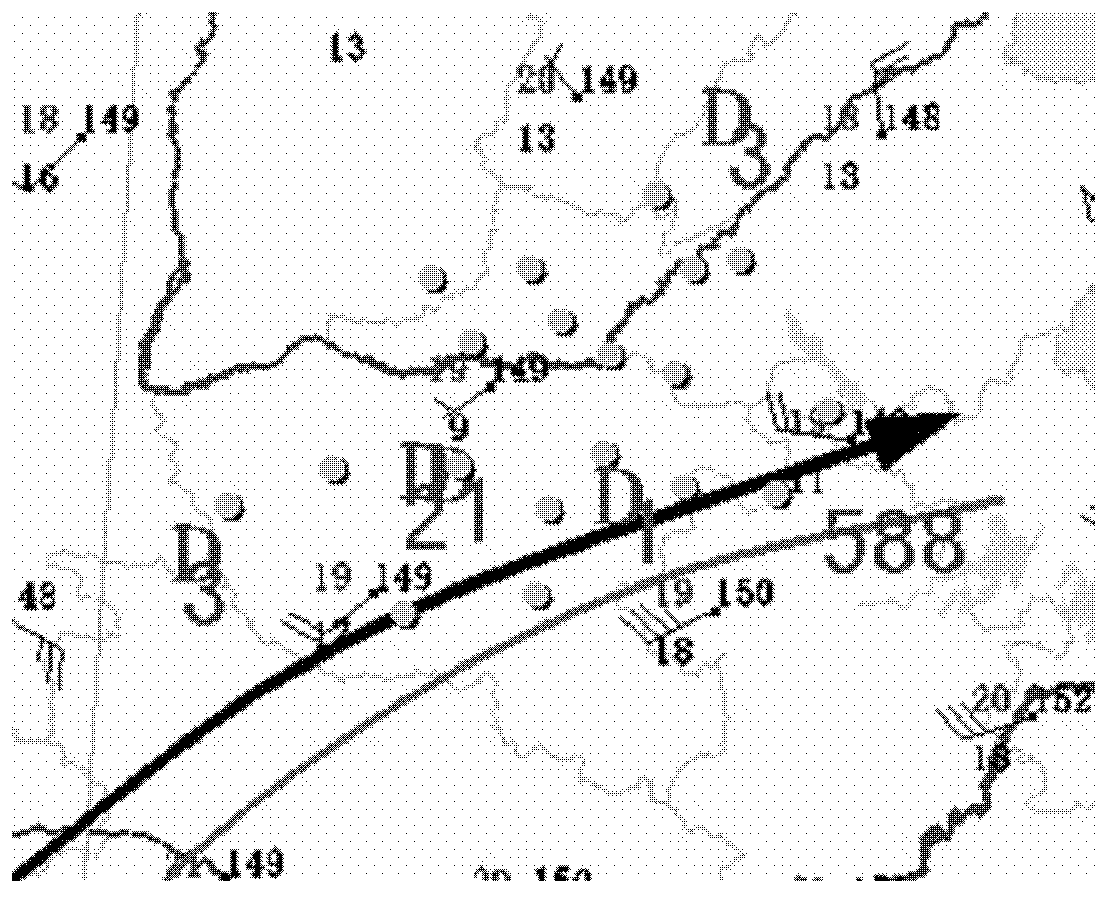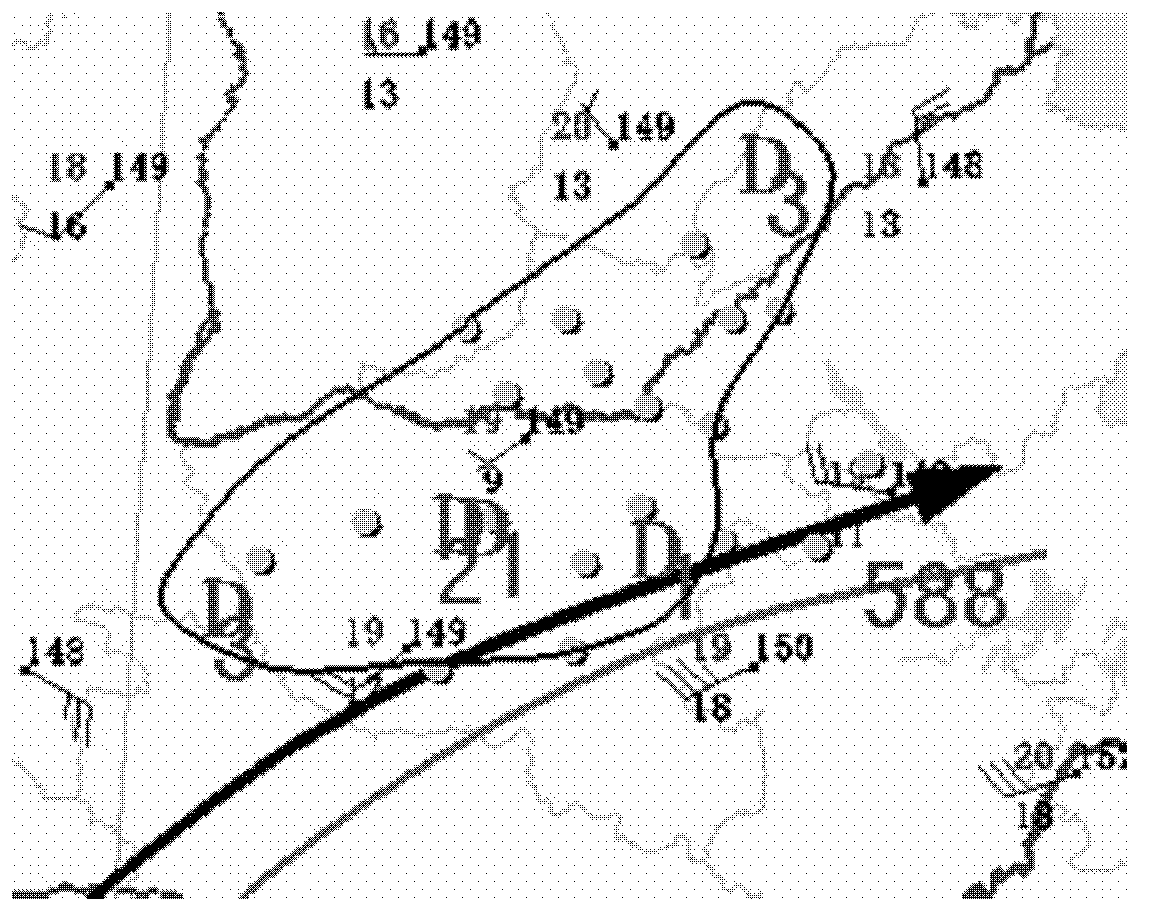Method for forecasting heavy rainfall by boundary aggregation method
A technology of heavy precipitation and boundary points, applied in the field of meteorology, can solve problems such as difficult judgment, difficult to determine, and unspecific size of the falling area
- Summary
- Abstract
- Description
- Claims
- Application Information
AI Technical Summary
Problems solved by technology
Method used
Image
Examples
Embodiment 1
[0045] Embodiment 1: It is the specific implementation steps of the present invention to use the initial field data at 08:00 on July 18, 2010 to make a 12-hour (process at 08:00 on July 19, 2010) system type heavy rainfall fall area forecast in Henan area:
[0046] Step 1: Determine the interface layer: analyze the isobaric surface map data of the initial field (08:00 on July 18, 2010), and select the interface layer according to the above step 1). In this example, the temperature difference constant between any two stations is 4 degrees and 4 degrees The central point between the above two sites is the temperature difference boundary point on the interface layer (such as Figure 1A The solid point in ), select the 850 hPa isobaric surface diagram as the interface layer (M layer);
[0047] The second step: analyze the wind difference boundary point and the low vortex center point on the interface layer: according to the steps a and b in the above step 2), this example adopts t...
Embodiment 2
[0055] Embodiment 2: It is the concrete steps of the present invention's forecast Henan Province 2009.06.15.08 process:
[0056] Step 1: Determine the interface layer: analyze the isobaric surface map data of the initial field (08:00, June 14, 2009), and select the interface layer according to step 1). In this example, the temperature difference constant between any two stations is 4 degrees or above The center point between the two stations is the boundary point of temperature difference on the interface (such as Figure 2A , the base map is the 850 hPa live map, and the solid point is the boundary point of the analysis), and the obtained 850 hPa pressure surface map is selected as the interface layer (M layer);
[0057] Step 2: Analyze the wind boundary point and low vortex center point on the interface layer: According to the analysis of steps a and b in the above step 2), it can be concluded that there is no wind boundary point and low vortex center point on the interface ...
PUM
 Login to View More
Login to View More Abstract
Description
Claims
Application Information
 Login to View More
Login to View More - R&D
- Intellectual Property
- Life Sciences
- Materials
- Tech Scout
- Unparalleled Data Quality
- Higher Quality Content
- 60% Fewer Hallucinations
Browse by: Latest US Patents, China's latest patents, Technical Efficacy Thesaurus, Application Domain, Technology Topic, Popular Technical Reports.
© 2025 PatSnap. All rights reserved.Legal|Privacy policy|Modern Slavery Act Transparency Statement|Sitemap|About US| Contact US: help@patsnap.com



